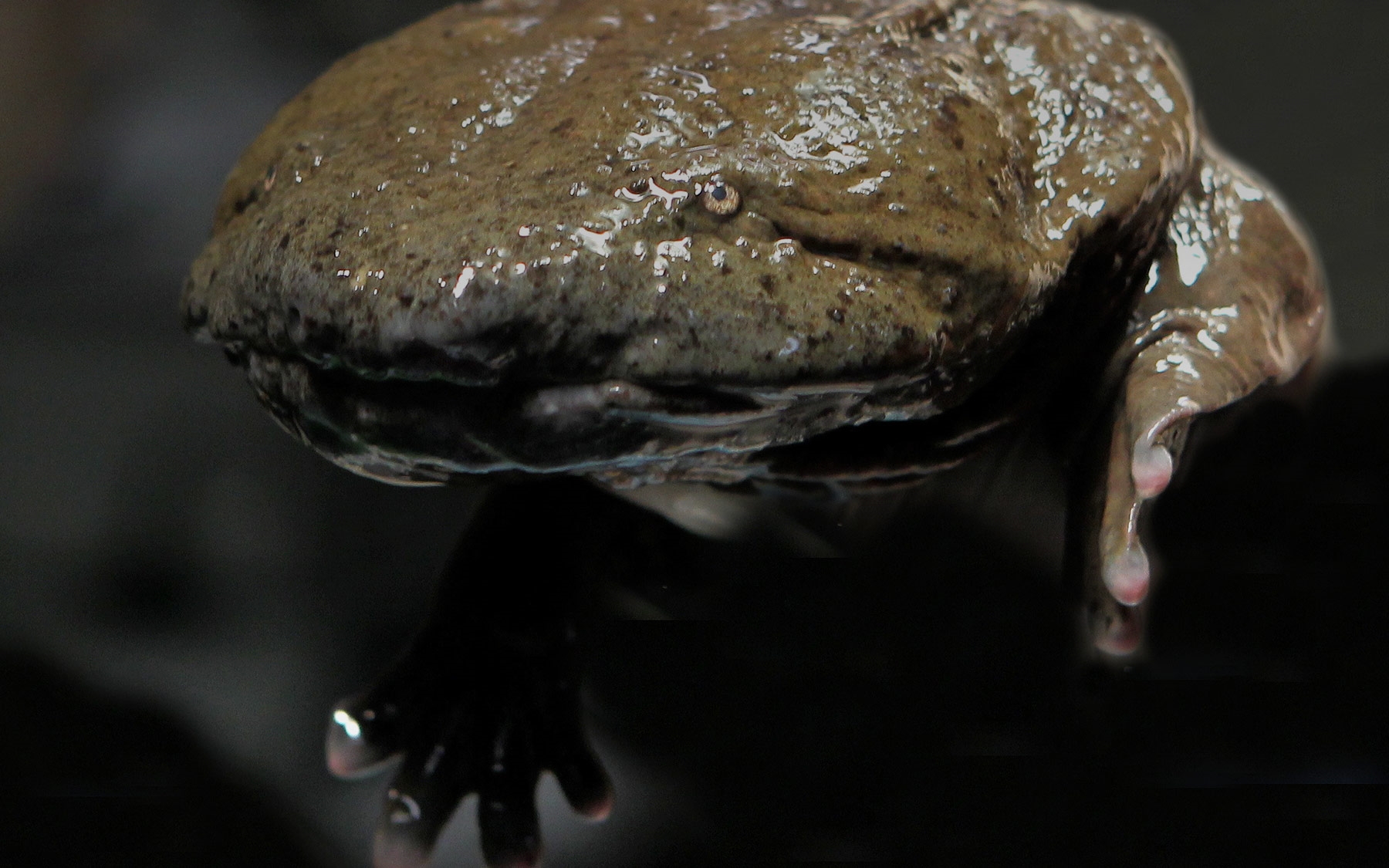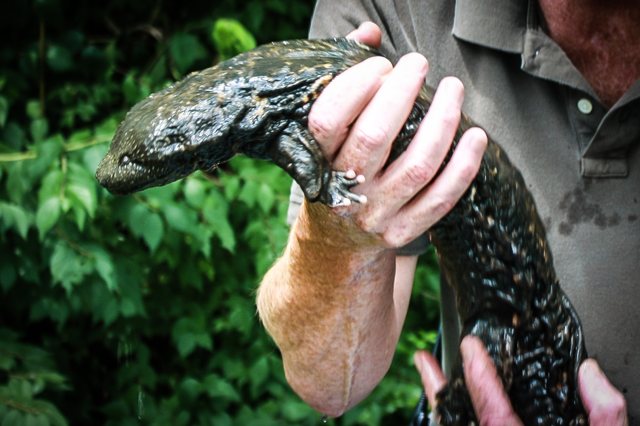Nashville Zoo has been actively involved in hellbender conservation since 2003, and several hellbenders can be seen on exhibit in the Zoo’s Unseen New World. Ectotherm Curator, Dale McGinnity, oversees the Zoo’s amphibian conservation efforts, which include hellbender breeding and field research. In 2019, the Zoo's ecotherm team produced 24 healthy eastern hellbender eggs through hormonal induction and artificial fertilization.
Finding Hellbenders
Until recently, not much was known about hellbender populations. Because of the lack of data, simply documenting where healthy hellbender populations exist in the wild is extremely important to forming a conservation plan for these creatures. In an effort to provide this much-needed research, McGinnity and MTSU biology professor Dr. Brian Miller applied for funding to document the hellbender populations in Tennessee and began their field work in 2003.
“Hellbenders can be found beneath large rocks in shallow rapids,” said McGinnity, “so many researchers studying hellbender populations just turn over rocks looking for hellbenders, but this alters the flow of water around and under the rock, inadvertently disrupting the hellbenders’ habitats and forcing them to find new shelter.” Instead, we have used “an inexpensive, underwater camera system to survey for hellbenders under rocks without disrupting them and monitor traps sized to specifically catch hellbenders.”
Successful Breeding Using Biotechnology
In 2012, Nashville Zoo announced the first successful captive breeding of Eastern hellbenders, as well as the first controlled breeding of any hellbenders using biotechnology. The two hellbenders were successfully hatched from eggs produced and artificially fertilized from a group of four hellbenders (one female and three males) living in an off-exhibit facility at the Zoo.
“It has taken five years to develop assisted reproductive technologies for captive hellbenders,” said McGinnity. “We hope that with further refinement over the next few years, this species can be reliably reproduced using these techniques.” McGinnity hopes captive breeding can replenish hellbenders’ numbers. “With reproduction technology, we can cryopreserve sperm and use artificial fertilization. We can maintain that genetic diversity with a lot fewer animals and a lot fewer resources,” McGinnity said. “That’s why we’re really excited about developing these techniques.”
First Hellbender Externally Fertilized with Cryopreserved Sperm
On October 11, 2015, the Zoo was successful in hatching an eastern hellbender that was the result of an egg being artificially fertilized with cryopreserved sperm; an achievement that had only been successful once before in an internal fertilizing tiger salamander in 2014. Moreover, this hellbender is the first externally fertilizing salamander to be produced utilizing cryopreserved sperm.
“It’s a pretty big deal for the conservation of this species and all amphibians,” said McGinnity. “This accomplishment means we can collect and preserve milt (seminal fluid containing sperm) from wild populations without removing hellbenders from their environment. Cryopreserved sperm may remain viable for hundreds to thousands of years when kept at ultra-low temperatures with liquid nitrogen.”
Releasing Hellbenders
Since the start of this conservation initiative, the Zoo has released over 100 Zoo-raised hellbenders into local Tennessee streams to help bolster the population of this state-endangered species.




